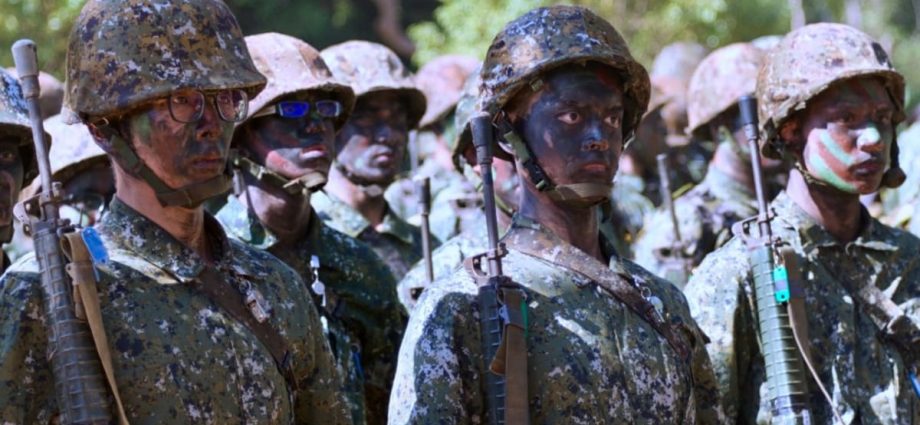
SELF-DEFENCE: DETERRENCE AND DIALOGUE
In a Wall Street Journal opinion piece on his defence plans last July, the DPP presidential candidate Mr Lai emphasised deterrence and said he would speed up Taiwan’s transition to an asymmetric fighting force. He is expected to continue President Tsai’s plans to bolster the military, including higher defence spending of 2.5 per cent of gross domestic product.
Both Mr Hou and Mr Ko have expressed support for raising Taiwan’s defence budget even higher, to 3 per cent.
Mr Hou has said he will pursue deterrence, dialogue and de-escalation in cross-strait relations. China is expected to resume dialogue with Taiwan if Mr Hou wins because the KMT accepts the so-called “1992 consensus”, which the DPP has refused to acknowledge.
The 1992 consensus is the understanding that both sides of the Taiwan Strait are part of one China, with each side having its own opinion as to what this means.
Dr Ko also wants to prioritise deterrence and communication in his approach to Beijing. He has said he will deal with the 1992 consensus “pragmatically”. Dr Shen said the former Taipei mayor does not seem to have a “central ideology”, and that it is harder to predict what a TPP administration would do.
When Chinese President Xi Jinping met his US counterpart Joe Biden last November, he denied American reports that he plans to invade Taiwan by 2027 or 2035. While both Dr Su and Dr Shen noted this exchange, they did not draw from it any definite conclusions on a unification timeline.
But Dr Shen believes that 70-year-old President Xi, who is not constrained by any term limits, is determined to unify the island with the mainland during his rule. China is pursuing both “peaceful” and forceful unification simultaneously as they are complementary – military might can be used to threaten Taiwan if it resists non-military means, he said.
“Peaceful” unification involves tactics like bribery, dividing Taiwan’s domestic unity, cultivating proxies, and ensuring a pro-China regime is in power, while forceful unification involves building up China’s capacity to meet US firepower, said Dr Shen.
He described three ways China could use force to achieve its objectives in Taiwan. First, the People’s Liberation Army (PLA) could intimidate Taiwan into accepting its terms for unification, such as “one country, two systems”, by launching missiles near the territory or occupying outer islands like Kinmen and Matsu.
Second, the PLA could impose a blockade by blocking maritime routes. Third, it could launch an invasion such as by establishing a beachhead in the Penghu islands. Invasion is the riskiest scenario for China and the PLA would suffer losses in its first wave of attacks, said Dr Shen, citing the high density of missiles on Taiwan and reserve forces that he described as 2 million to 3 million strong.
On how Taiwan can respond to this, Dr Shen said its priority was not to give China any excuse to wage war, as this would also hurt chances of foreign military intervention on the island’s behalf. Taiwan must also build up its self-defence capability in order to have a bargaining chip in any talks with China.
“If there’s an understanding about this, then no matter which party is elected, there should be a consensus on strengthening the defence forces and putting in a large amount of resources to do so,” he said.
For Taiwan’s young men expected to defend their homeland, however, the simmering conflict and strategic considerations can seem very far removed from their own lives.
High school student Wang Bo-hsuan, 16, said he simply felt unlucky that his parents had him after 2005, and that he will have to serve one year of conscription.
“It makes me question why I was born so late.”

